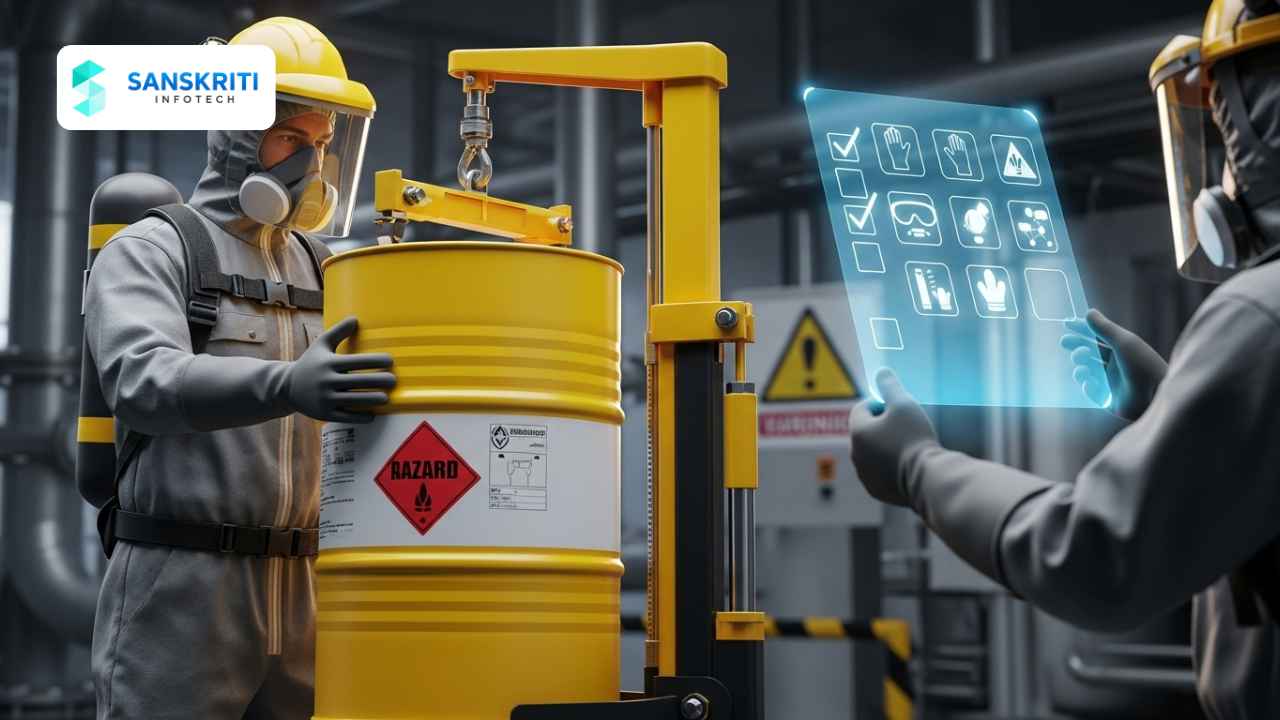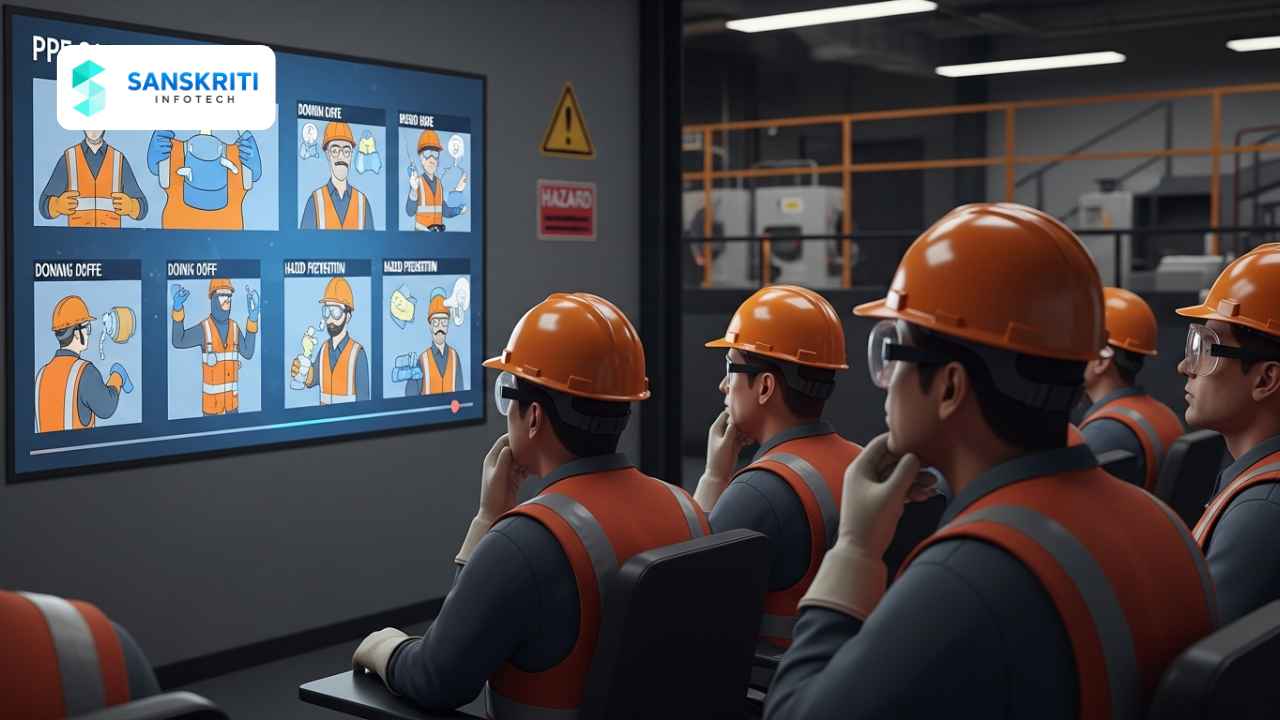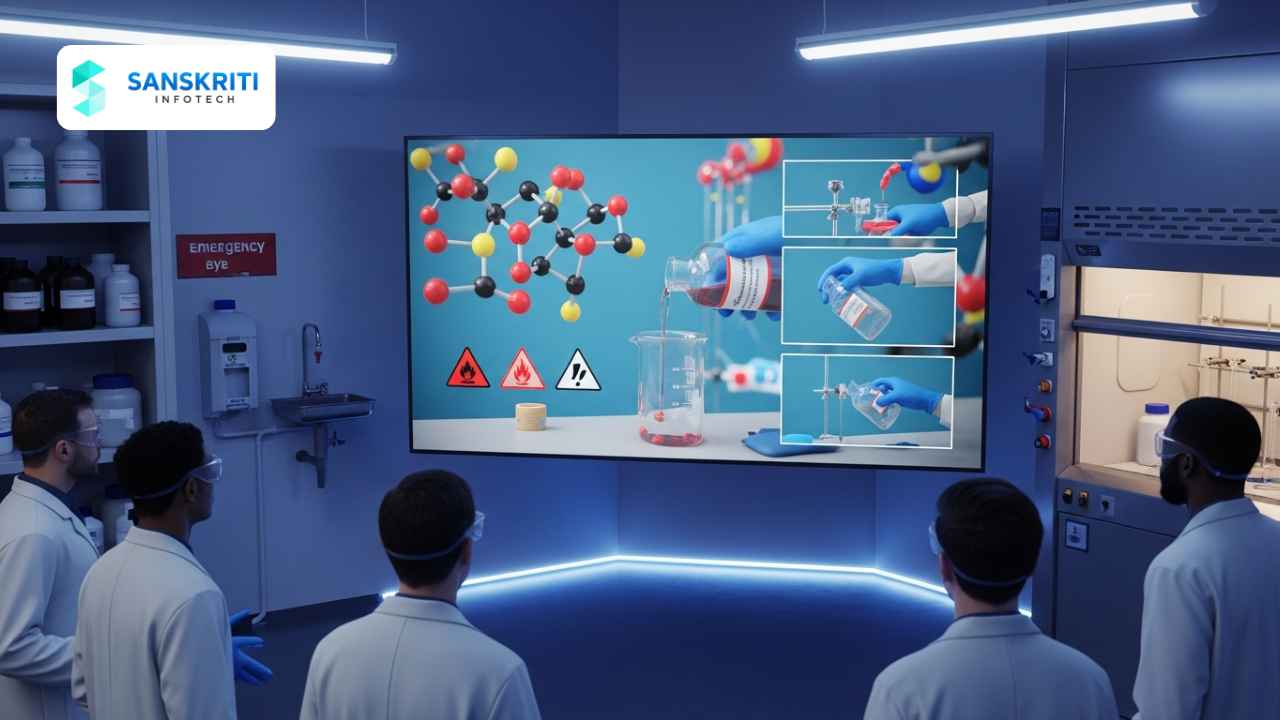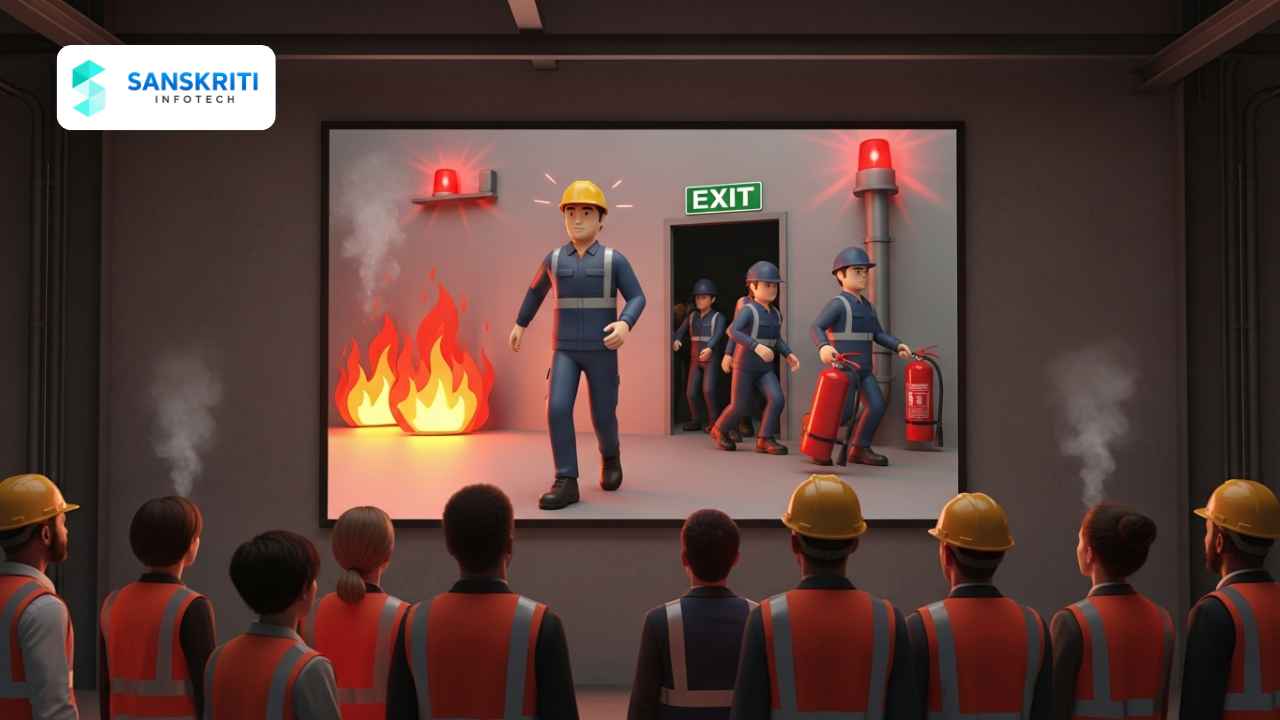Table of Contents
Introduction
Chemical Safety Animation is an innovative solution that helps manufacturing units train their workforce on the safe handling, storage, and disposal of hazardous chemicals. Chemical accidents such as spills, toxic exposures, and improper storage are among the most common causes of workplace injuries and regulatory violations. Traditional classroom training and manuals often fail to demonstrate the dangers of unsafe chemical handling, leading to preventable incidents. By using 3D animated training, organizations can deliver highly visual and engaging modules that simplify complex safety protocols. Sanskriti Infotech specializes in developing chemical safety animations that empower manufacturing units to reduce risks, comply with global safety standards, and build a culture of safety.
What Is Chemical Safety Animation?
Chemical Safety Animation refers to 2D or 3D animated modules that train employees on safe chemical management practices. It includes demonstrations of how to read and interpret Material Safety Data Sheets (MSDS), proper labeling under Globally Harmonized System (GHS), use of personal protective equipment (PPE), and correct procedures for spill response and chemical disposal. Instead of reading long technical documents, employees can visually observe correct handling techniques and accident scenarios, making training more impactful and memorable.
Why Chemical Safety Training Is Critical in Manufacturing
- OSHA’s Hazard Communication Standard (HazCom) requires training on chemical hazards. Learn more about regulations at OSHA and REACH.
- Common risks include exposure to acids, solvents, flammable materials, and reactive chemicals.
- Long-term exposure can lead to chronic illnesses, respiratory diseases, or skin disorders.
- Accidental spills can cause fires, explosions, and environmental contamination.
- Compliance failures can lead to heavy penalties, downtime, and reputational damage.
Challenges with Traditional Training
- Workers often forget complex handling procedures explained in manuals.
- Language barriers reduce effectiveness in multinational plants.
- Limited engagement during classroom sessions reduces retention.
- Inability to demonstrate real accident scenarios safely.
- Inconsistent training delivery across different sites.
Benefits of Chemical Safety Animation
- Visual demonstration of chemical storage, segregation, and labeling practices.
- Detailed guidance on correct PPE usage for different chemicals.
- Simulation of chemical spill response and emergency first aid.
- Multilingual delivery ensuring accessibility to diverse workforces.
- Improved worker confidence and recall during high-pressure situations. More on training best practices at HSE UK.
Industries That Benefit from Chemical Safety Animation
- Pharmaceutical manufacturing – handling solvents and hazardous raw materials (Pharma Safety Animation).
- Oil and Gas downstream – processing and refining chemicals (Oil & Gas Safety Animation).
- Food and Beverage – safe use of cleaning agents and sanitizers.
- Electronics – handling acids and solvents during production processes.
- Chemical processing units – large-scale storage and handling of hazardous substances (Chemical Industry Safety Animation).
Case Study: Sanskriti Infotech Enhancing Safety in a Pharma Manufacturing Unit
A pharmaceutical manufacturing plant faced recurring incidents of chemical handling violations, resulting in near-misses and compliance penalties. Despite periodic safety training, employees often ignored MSDS instructions and mishandled PPE. Sanskriti Infotech developed customized 3D chemical safety animation modules that visually explained safe storage, spill response, and PPE practices. After implementation, the plant reported a 50% reduction in chemical safety incidents and improved compliance scores during safety audits. The National Institute for Occupational Safety and Health (NIOSH) also highlights benefits of visual safety training.
The ROI of Chemical Safety Animation
- Fewer incidents lower compensation and insurance costs.
- Compliance with OSHA, REACH, and HSE standards avoids regulatory fines.
- Improved workforce confidence reduces downtime and errors.
- Consistent training across sites ensures standardization and audit readiness.
Future Trends in Chemical Safety Training
- Virtual Reality spill response simulations for immersive learning.
- Augmented Reality overlays guiding PPE usage and chemical handling steps.
- AI-powered predictive hazard identification to customize training content.
- Digital twins of plants to simulate chemical reactions and potential accidents.
Why Choose Sanskriti Infotech for Chemical Safety Animation
Sanskriti Infotech is a leading provider of chemical safety animations for global manufacturing units. Our solutions are designed to meet OSHA, HSE, and REACH standards while ensuring maximum engagement through visually rich and interactive training. We specialize in tailoring content to the specific needs of industries like pharmaceuticals, oil and gas, and chemical processing. By partnering with Sanskriti Infotech, companies can reduce risks, improve compliance, and foster a safer working environment.
Conclusion
Chemical Safety Animation offers manufacturing units a modern, effective way to train employees on hazardous material handling and compliance. By turning complex procedures into engaging visual lessons, organizations can significantly reduce risks and improve workplace safety. Sanskriti Infotech continues to lead the way in developing high-quality safety animations that protect workers, strengthen compliance, and promote safety-first cultures worldwide.






